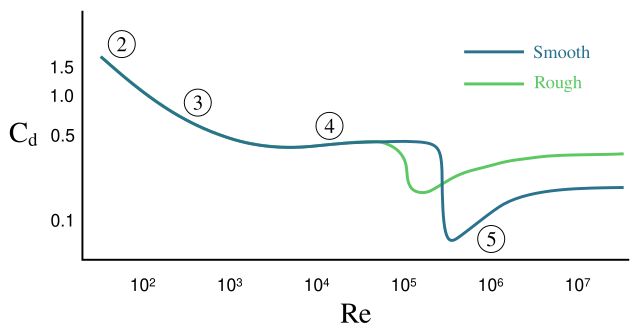Drag_crisis
In fluid dynamics, drag crisis (also known as the Eiffel paradox[1]) is a phenomenon in which drag coefficient drops off suddenly as Reynolds number increases. This has been well studied for round bodies like spheres and cylinders. The drag coefficient of a sphere will change rapidly from about 0.5 to 0.2 at a Reynolds number in the range of 300000. This corresponds to the point where the flow pattern changes, leaving a narrower turbulent wake. The behavior is highly dependent on small differences in the condition of the surface of the sphere.
This article needs additional citations for verification. (October 2008) |
